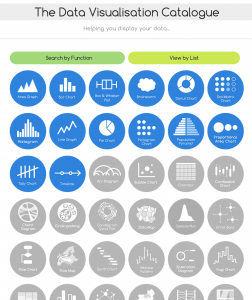“Engagement is the reward you get when you meet the needs of your customers with pathological empathy for their perspective, problems, points of view,” said Ann Handley
Content marketing is akin to putting a face on your company or brand. Content’s role is to build the engagement pipeline between prospective customers and your business.
Rock Content has launched a multi-part series into content engagement and spoke to some top thought leaders in content marketing to get their perspective. We’re featuring stories that cover several topics around content marketing. Be sure to check Engage Magazine for the latest in this series.
Relevant and targeted content is what hooks them in and engagement is the grease that puts the gears into motion and ideally helps achieve business goals.

“Social media and content marketing means that you can have a direct line to your prospects, customers, and audience. And in return — they have a direct line back to you. That’s a fundamental shift in marketing, and it’s a lot different from traditional broadcast tools and marketing,” said Ann Handley, Chief Content Officer at MarketingProfs and author of “Everybody Writes Your Go-To Guide to Creating Ridiculously Good Content.”
The overall goal with engagement is simple — getting someone to take action on a piece of content. Nathan Lump, incoming Editor at Travel + Leisure at Time Inc. and former Director of Branded Content at Conde Nast, said that engagement on a basic level is no different for brands than it is for editorial publishers.
“There are different ways to sort of slice it in terms of what your priorities are. But at the end of the day, you’re looking for evidence that what you’re making is resonating,” Lump said.
The meaning behind what resonates can vary, just like engagement. But they both represent some kind of involvement with the content.

Content Extras as Rewards
“Here’s how I think of it: Engagement is the reward you get when you meet the needs of your customers with pathological empathy for their perspective, problems, points of view. You get an audience who relies on you for information or who you delight with ‘content gifts,'” Handley said.
Think of content gifts as bonus content to reward the audience. It’s similar to an Easter egg in a computer program or a bonus trailer at the end of a movie. Handley pointed to an example by designer Rebecca Minkoff. She said the designer previewed her new collection using Snapchat, giving fans a 10-second glimpse of each of her new looks during New York’s Fashion Week last September.

by rebeccaminkoff via Instagram
“That’s a great way to create brand engagement while also giving your audience a kind of content gift,” Handley said.
Brands Standing for Something
It’s one thing to attract the audience with bonus content. It’s another to stand for an idea or cause and then get the audience to rally around the cause you’re representing.
Lump pointed out that content marketing helps attract those who are turned off by traditional advertising and helpful for brands that want to stand for something.
“There are increasingly brands that are nuanced in their marketing approach in a sense that they don’t always want to do the hard sell essentially. They want to approach their marketing from a perspective of telling a certain kind of story about what they stand for,” he said.
https://www.youtube.com/watch?v=AJYARjO-9Hg&feature=youtube_gdata
Film The Home Run The Responsibility Project by Liberty Mutual
by aslamstar13 via YouTube
Lump recalled working on The Responsibility Project with Liberty Mutual. He said the insurer wanted to stand for being a responsible company so they created content to explore this idea of being responsible in this day and age.
“That sustained effort around that topic really allowed Liberty to actually not just say that’s what they were, but to actually demonstrate that. I think content’s really good at that,” Lump said. “The other thing that quality content also allows brands to do is really it allows brand to tell a story. It allows them to tell a story about themselves. It allows them to do that in a way that is more nuanced, more essentially complex than what they can do in the form [of] let’s say a static print ad or a 30-second television spot.”
Using content to reach your audience reinforces the association with that concept and helps move engagement along.
“One of the things that’s great when you can really hit the engagement around content — it also starts to create a different value exchange in yourself and your audience. Typically, brands build relationships with their audience by providing them with a product or service. If you’re providing people with quality content that resonates that’s a different kind of thing that you’re now providing to them. It’s an additional thing and ideally it’s complementary to your products and services,” Lump said.
https://www.youtube.com/watch?v=iNdBHmZAOr4
How Much Science Can You Fit Into 6 Seconds? – GE
by General Electric via YouTube
Being Relatable Using Content
Content is a way for big companies to reach people in a way they understand. He said that’s why companies such as IBM and GE invest so much in content marketing. “They have large, complex businesses that are very hard to explain in a way that is meaningful. So content allows them to sort of tell that story about themselves over time,” he said.
https://www.youtube.com/watch?v=39jtNUGgmd4
IBM Centennial Film: 100 X 100 – A century of achievements that have changed the world
by IBM via YouTube
Earlier this year, Conde Nast’s Wired magazine launched a rich media advertising experience with Netflix, which was compared in several media reports to the award-winning “Snowfall” interactive by The New York Times. Lump said the Netflix campaign was content branded as coming from Netflix that lived natively within Wired.com.
“We saw really, really strong performance on that piece of content — relative to other things that we’ve done. I think that’s a really good example of when you reach and when you try harder and when you do something that does feel a bit more distinctive and more original then you can actually see better results from it,” he said. “Just on a pure engagement level … every brand’s objective in every program or campaign over time can be different and sometimes your ultimate goal may not be having a user spend several minutes on your content. That may not be what you’re trying to drive, but that is a kind of engagement and we saw good engagement on that content.”
Conde Nast also worked with Pantene on native advertising videos. “We saw really, really strong view-through content, and I think that says a lot about the fact there was storytelling in those videos and that it was a higher quality material. This wasn’t stuff we just spat out of a machine. I think when you look at the engagement numbers, you do see that anything with that quality level makes a difference. That may not be the exact objective for every brand,” he said.
Apply User-Centric Mindset
To figure out an objective, brands need to establish who the content is aimed at and what they want to accomplish. That may require a change in focus. Lump said many editors are trained to think in a user-centric mindset, but marketers are not.
“I think a lot of marketers are not necessarily trained in that user-centric mindset. They’re trained much more to say, ‘What are the messages that we can build around our positioning or around our strategy to get our message out there?’ There’s nothing wrong with that approach, but I think there is something very beneficial about the user-driven approach, and I think injecting that into marketing thinking is a positive thing, ultimately. I think it is critical when brands begin to engage in content, in particular.”
That means, when creating content, always be thinking: Why does this matter to my audience? Handley said companies can achieve engagement and cut through the noise by relentlessly focusing on their audience.
“Lots of business make the mistake of trying to get their audience talking about them/their products or, uh, ‘solution’. It’s far better for your company or brand to align yourself with what matters to them,” she said.
When it comes to reaching potential customers with a message, thinking about their needs certainly helps. Finding out your targeted audience’s pain points and creating content that addresses those will go a long way to toward relevance, necessity and engagement.
Click here to see how Rock Content’s content engagement platform can help your company achieve its business goals.







